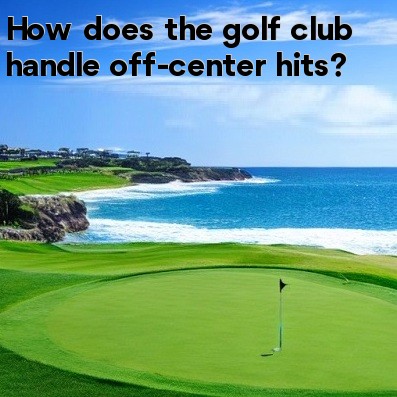
In golf, how does the golf club handle off-center hits?
Off-center hits are a common occurrence in golf, and the performance of the golf club plays a crucial role in how these shots are handled. A solid understanding of how the club responds to off-center hits can help golfers improve their game and minimize the negative effects of these shots.
When a golfer strikes the ball off-center, it leads to what is commonly known as mis-hits. In a perfect shot, the clubface contacts the ball squarely, but in mis-hits, the clubface makes contact with the ball on either side of the sweet spot. This can cause the ball to spin off target, lose distance, and result in poor shot accuracy.
The construction and design of golf clubs are developed to minimize the impact of off-center hits. One of the main elements that assists in handling off-center hits is the clubface. The clubface is the part of the club that makes contact with the ball, and it is usually slightly larger than the sweet spot. The larger face allows for a greater margin of error when striking the ball off-center.
An important feature of the clubface is the moment of inertia (MOI). The MOI measures the club's resistance to twisting upon impact. Clubs with higher MOI values tend to be more forgiving on off-center hits. When the ball is struck off-center, a higher MOI helps reduce the amount of twisting and torque in the clubhead, resulting in a more consistent shot outcome.
Another aspect that affects off-center hits is the clubhead design. Different clubhead designs have varying levels of forgiveness and stability. Cavity-back irons feature a design with a larger cavity behind the clubface, allowing more weight to be distributed around the perimeter. This design increases the club's forgiveness on off-center hits by providing more stability and reducing twisting.
On the other hand, blade irons have a smaller profile and a more concentrated weight distribution behind the sweet spot. While these clubs offer enhanced control for skilled golfers, mis-hits with blade irons often result in greater distance loss and less accurate shots.
- Game improvement clubs are a popular choice for golfers looking to handle off-center hits. These clubs typically have larger clubheads, wider soles, and lower centers of gravity. They are designed to provide more forgiveness and help golfers achieve better results on mis-hits. Game improvement clubs are often favored by beginners and high-handicap golfers.
- Hybrids are also valuable when it comes to handling off-center hits. These clubs combine the features of long irons and fairway woods, offering a more forgiving and higher launching option. The design of hybrids helps golfers achieve better results on off-center strikes and can be a useful alternative to long irons.
In conclusion, off-center hits are an inevitable part of golf, but the design and construction of golf clubs help mitigate their negative impact. Features such as larger clubfaces, higher MOI, cavity-back designs, and game improvement clubs all contribute to making off-center hits less detrimental to a golfer's performance. Understanding these features can help golfers make better club choices and improve their overall game.




